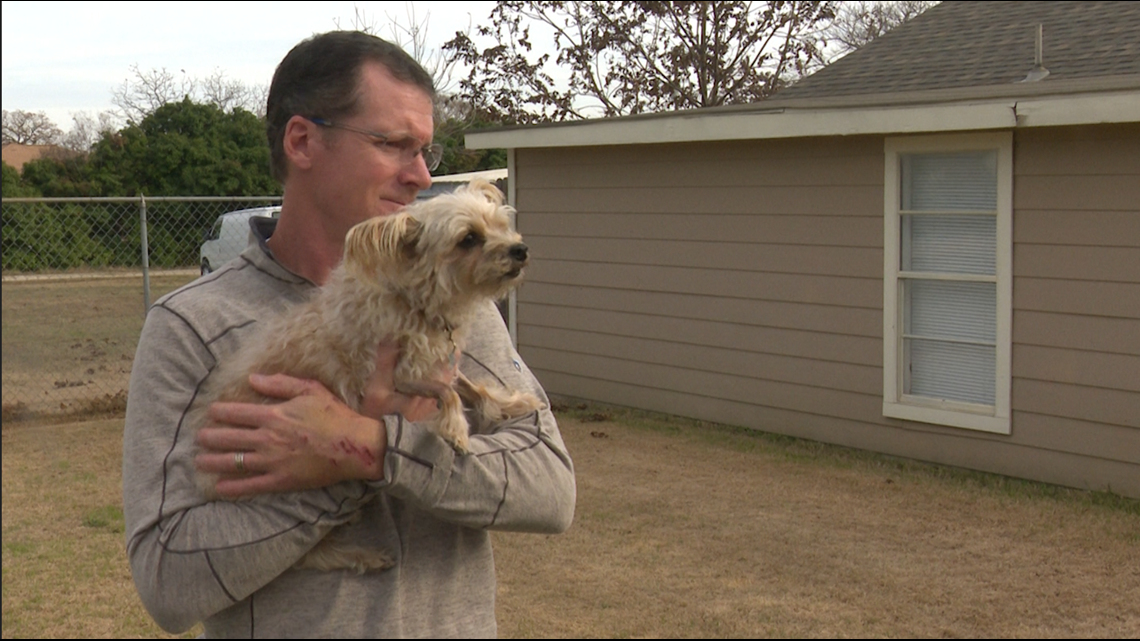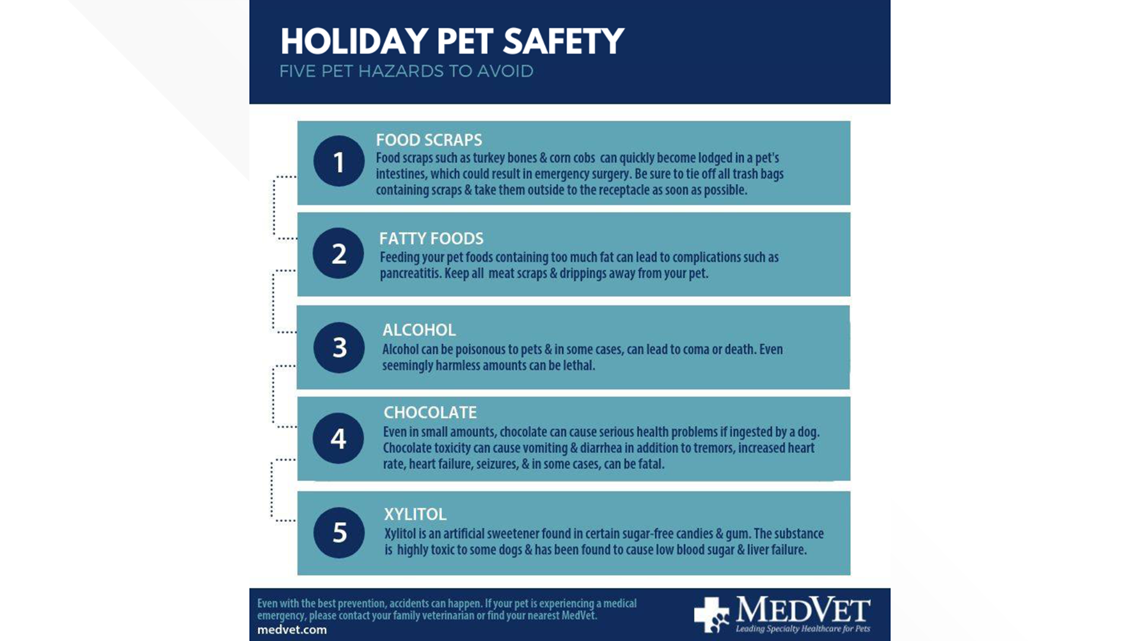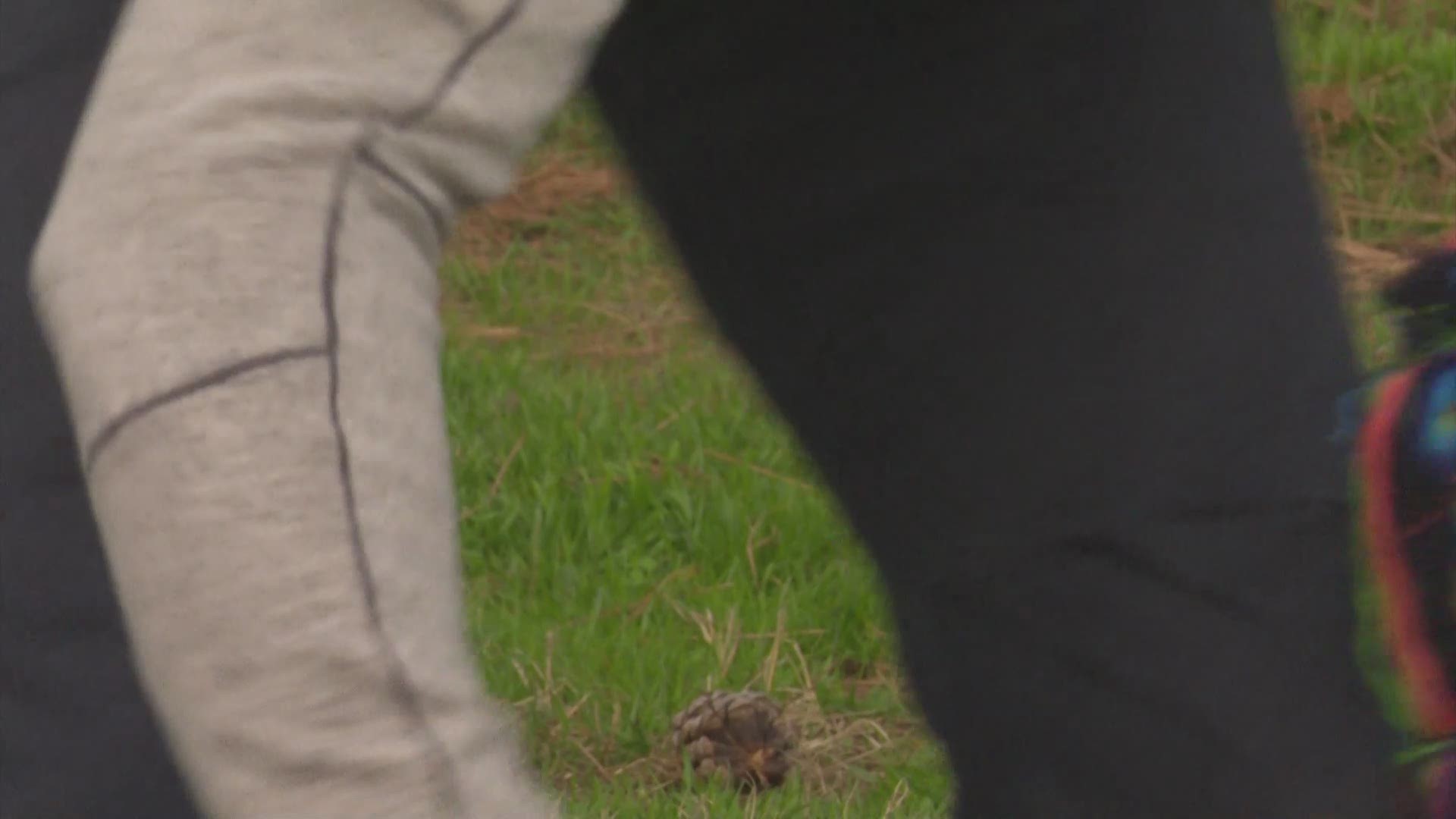DALLAS — Mike McKelvey is a dog person.
He grew up with dogs and has two or three rescue dogs in his Southlake home he shares with his family.
Despite decades of dog ownership, McKelvey had no idea that one ingredient with a funny name could kill his furry companions.
Lacey, a chipper Yorkipoo, pouts if she doesn't get her dinner right away. She's usually peppy after eating, but a couple weeks ago, her eyes started to bulge after her nightly meal.
"My wife yelled at me to come into the kitchen because Lacey was looking very abnormal," McKelvey said.
Lacey couldn't walk in a straight line. She vomited.
"She eventually just fell over on the floor," McKelvey said.


Lacey occasionally throws up, but her other symptoms were scary. McKelvey and his wife rushed Lacey to an emergency pet clinic.
"As my wife's holding a dying dog in her lap, I'm just doing everything I can to get to the vet as quickly as I can," McKelvey said. "We thought she was going to die."
While the clinic staff tried to figure out the cause of the sudden illness, McKelvey got a text from his daughter, who was still at the house.
She found a piece of partially-chewed Mentos gum on a bed in the house.
The gum was dangerous because of the first listed ingredient: xylitol.
"We weren't aware of it at all," McKelvey said. "I'm sure there are others out there that own dogs that aren't aware of it."
Fortunately, Lacey lived.
The dangers of Xylitol
Xylitol is a sweet-tasting crystalline alcohol that has become a popular sugar replacement in many foods, including some that dog owners often give their pets.
Pet illnesses connected to xylitol have been on the rise, said Jennifer Mahon, a critical care doctor at MedVet, an emergency hospital for animals.
"There's been a rise in toxicity with it and lack of knowledge of it because it's been incorporated into our foods more frequently in the past decade," Mahon said.
Xylitol isn't dangerous for humans because we metabolize it differently than dogs. No matter the animal's size, xylitol can cause the dog's blood sugar to drop, potentially harming organs and the brain.
Mahon said weakness is one of the first signs of the effects of xylitol. Worsening symptoms include seizures and collapse.
If not quickly treated, the animal could die, Mahon said.
Here are some of the most common foods that could contain xylitol:
- Toothpaste
- Mouthwash
- Chewing gum
- Peanut butter
- Ice cream or yogurt
- Candy (sugar-free)
- Fruit drinks
- Jellies or jams
- Cereals
- Over-the-counter vitamin supplements
Precautionary steps
Purses and jackets should always go in a closet, on a coat hangar or simply off the ground when there are dogs around. Mahon said her office sees people coming in far too often with a pet that got into a purse or coat pocket.
Baked goods also need to be somewhere safe, pushed to the back of the counter or stored in pantries.
"Some people love putting wrapped baked goods under the Christmas tree during the holiday season," Mahon said. "This is an easy way for a gift to be ruined and to get your dog sick as well."
If the dog eats something dangerous, act quickly.


According to Canine Journal, these are some other foods your dog shouldn't eat:
- Alcohol
- Apple seeds
- Avocado
- Cat food
- Chocolate
- Coffee or tea
- Cooked bones
- Corn on the cob
- Fat trimmings
- Garlic
- Grapes or raisins
- Hops
- Liver
- Macadamia Nuts
- Marijuana
- Milk or dairy products
- Onions or chives
- Peppers
- Persimmon, peaches or plum pits
- Raw meat or fish
- Rhubarb or Tomato Leaves
- Salt
- Sugar
- Tobacco
- Yeast

